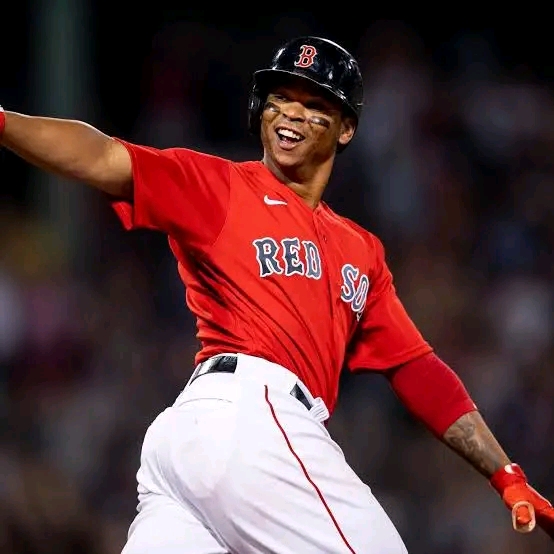In a move that sent shockwaves reverberating across Major League Baseball, the Chicago Cubs have acquired All-Star third baseman Rafael Devers from the Boston Red Sox in a blockbuster trade that few saw coming—but no one will forget.
The Cubs, already off to a strong start in 2025, just threw down the gauntlet in the National League. And in doing so, they may have also sounded the alarm that this team is no longer in a rebuild. They’re in it to win it—now.
The Trade That Broke the Internet
According to multiple confirmed reports, the full trade is as follows:
Chicago Cubs receive:
3B Rafael Devers (owed $313 million through 2033)
Boston Red Sox receive:
OF Pete Crow-Armstrong
SP Cade Horton
3B James Triantos
Cash considerations (reportedly ~$12M in salary offset)
A player to be named later
The deal was finalized late Monday night, with both teams confirming the news early Tuesday morning. Fans on both sides of the trade are still trying to process it.
The Cubs’ Stunning Turn Toward Aggression
It’s no secret that Cubs President of Baseball Operations Jed Hoyer has been stockpiling young talent since the teardown of the 2016 championship core. But this trade? This is an entirely new playbook. It’s a power move.
After a surprisingly hot start to 2025, bolstered by breakout seasons from young arms and a rejuvenated offense, the Cubs front office clearly saw an opportunity—and took it.
Devers immediately becomes the most dangerous bat in the Cubs lineup. He brings left-handed thump, postseason experience, and a presence that rivals any superstar in the National League. He also becomes the face of a franchise that’s been craving a new icon since Kris Bryant’s departure.
And the timing? Absolutely ruthless.
Just weeks ago, the Red Sox were insisting Devers wasn’t on the market. But behind the scenes, tensions had reportedly been mounting. League insiders say Devers had grown frustrated with Boston’s direction, particularly after the team floundered in April and failed to make meaningful offseason upgrades.
Why Boston Pulled the Plug
This trade signals one thing above all: the Red Sox are waving the white flag on 2025—and possibly beyond.
Sources close to the organization describe a fractured relationship between Devers and Boston’s front office. After signing his $313 million extension in early 2023, Devers had remained loyal publicly. But frustration over the team’s lack of competitiveness—coupled with inconsistent messaging from team brass—reportedly led Devers to request a change of scenery.
Boston, for their part, recoups a massive haul.
Pete Crow-Armstrong gives them an elite defensive center fielder with improving bat-to-ball skills. Cade Horton, considered one of the best pitching prospects in baseball, could anchor their rotation within a year. And James Triantos adds a solid infield bat with versatility.
Still, for Red Sox fans, this one stings—and it will for a long time. Trading away a homegrown superstar in his prime is the type of move that shakes a fanbase to its core.
Immediate Impact in Chicago
In the span of a single transaction, the Cubs have gone from dark horse contenders to full-blown NL power players.
Imagine this lineup:
1. Nico Hoerner – 2B
2. Seiya Suzuki – RF
3. Rafael Devers – 3B
4. Cody Bellinger – 1B/CF
5. Christopher Morel – DH
6. Dansby Swanson – SS
7. Ian Happ – LF
8. Miguel Amaya – C
9. Michael Busch – 1B/3B
With Devers anchoring the middle, suddenly the entire lineup looks deeper, more dangerous, and playoff-ready.
And don’t overlook the leadership aspect. Devers, still only 28, brings World Series experience and a postseason pedigree. He’s a proven clutch performer who has thrived in October—exactly the kind of player Chicago needs to lead a postseason push.
A Message to the League: The Cubs Are Back
This trade is about more than talent—it’s about identity.
For years, the Cubs have been caught between past glory and future promise. Now, they’re making a statement: The future is here, and it wears pinstripes with a bear on the sleeve.
Rafael Devers is not just a marquee acquisition. He’s a message to every team in the National League: Chicago is no longer rebuilding—they’re reloading.
What’s Next?
There are still questions to be answered.
Will the Cubs pursue more pitching at the deadline to bolster their rotation behind Justin Steele and Shota Imanaga? How will Devers adapt to the expectations of Wrigleyville and the intense media spotlight of Chicago?
And for Boston—where do they go from here? Is this the start of a larger teardown, or a pivot toward a faster rebuild with a new core?
Whatever happens next, one thing is clear: Baseball just got a lot more interesting. And for Cubs fans, the wait for the next dynasty might be shorter than anyone expected.
Bookmark this page.
We’ll have updates, analysis, and fan reaction as this historic deal continues to ripple across the league.
